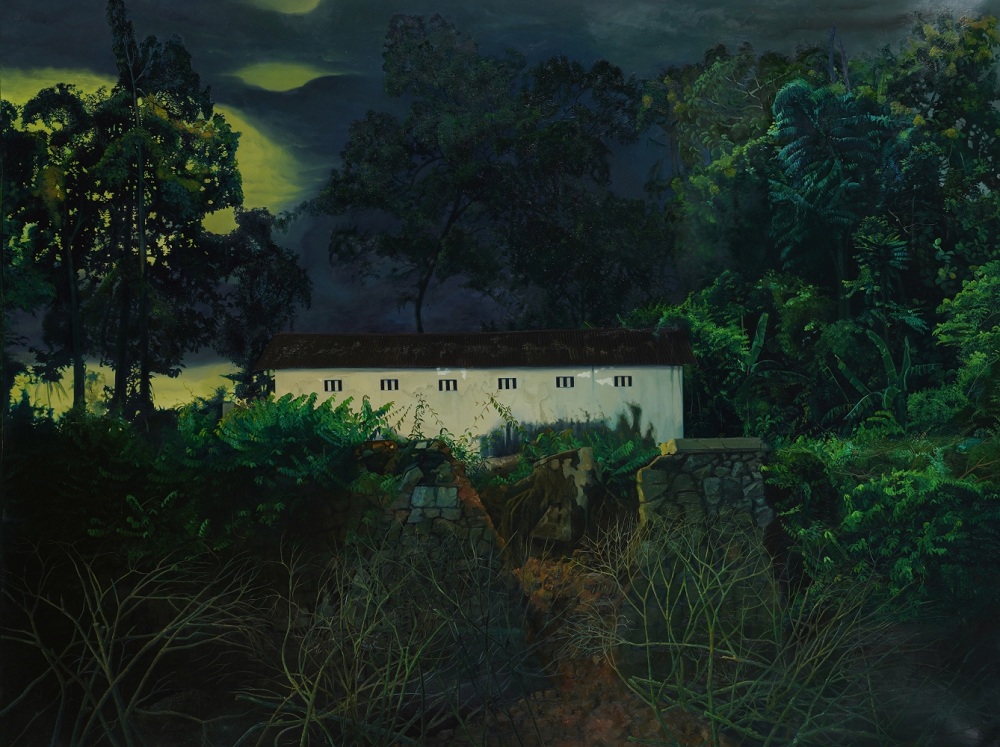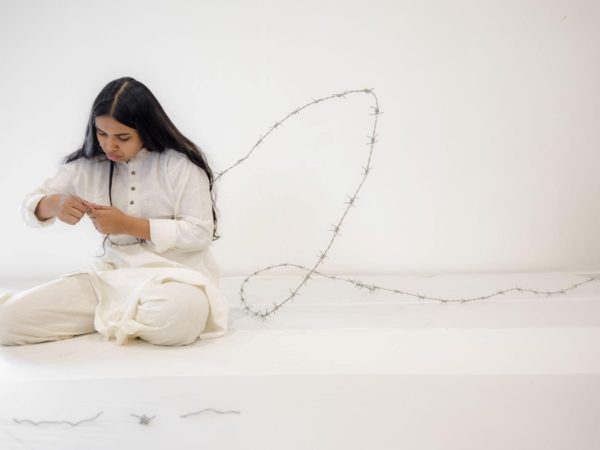Ratheesh T is a Kerala based artist who works predominantly with oil on canvas. Ratheesh’s work foregrounds the isolation and anxiety of individuals faced with class and caste distinction. The dark-skinned figures taking centre-stage himself, his family, or acquaintances who have been part of his journey are the bearers of a narrative that is as personal as it is political.
“My work deals with the life and people I see around me in rural and semi-urban southern Kerala, which is where I come from. This is my demographic. The people around me are often victims of daily life, sectarian divides, and prejudice. I prefer to use dark colours in my paintings because of these social circumstances.”
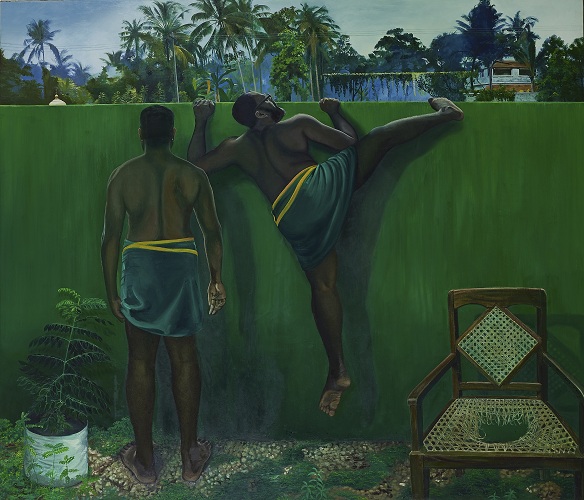
SP: As you often mention, your sources of inspiration are the people and the landscapes you are surrounded by. Please elaborate on what these landscapes are to you and what role do they play in your narration?
RT: I usually narrate my surroundings and people around me. I am well familiar with the people, their backgrounds and situations that surround me. I know their pulse, so it naturally comes into my works.
Communalism is the biggest problem that the world faces now. It has been centuries since black and white and caste and religion began to create barriers to segregate people. Even our democratic system is made up of caste and religion equations. One of the conditions of this period is that art has been reduced to being a luxury, a means to add space and a market object, as it goes through a period of dire consequences.
When you hear of Kerala, the cultural heritage, the hills, the coconut trees and the natural beauty are all commercialised. But there are many caste colonies in Kerala that have been marginalised by the lower castes only with centuries-old reminders of the caste system. Uninhabited hilly areas and swamps are first isolated and then colonised and normalised and handed over to the lower castes.
Many of my paintings are also a visual illustration of how all other forms of discourse capital in institutionalised social structures segregate people on the basis of caste and exclude them. Crowds in such places alienate people from the mainstream of society and force them to focus only on their work. It is labelled as the site of all illegal activities and is included in the list of areas where criminals can be found.
As an artist, as a citizen within this political system, and as a place where I spend most of my artistic life, it is only natural that such areas and people should come into my paintings. There is no sequel to this. Beyond some of my pictures, not all pictures are the same. Allotted land, Independence day and my village series are based on these themes. Many other paintings contain political essence but are purely personal critiques and observations.
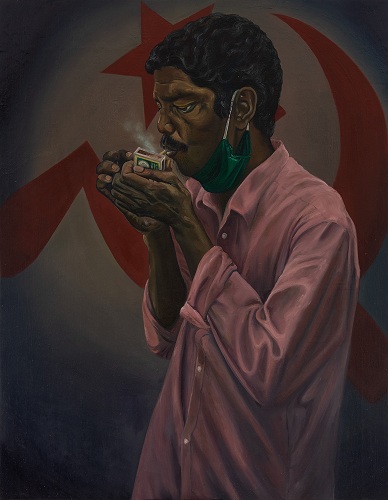
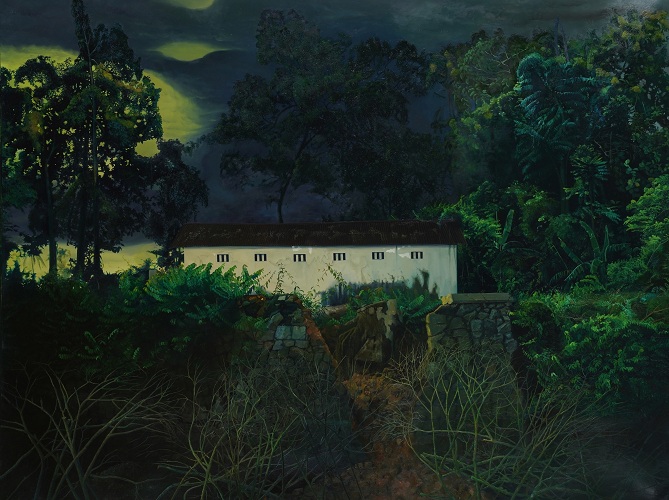
SP: As a contemporary artist, what is your take on the ever-changing contemporary art?
RT: As we see today there are only peripheral changes occuring in the art practice. Despite technological changes man has not yet been able to overcome nostalgia. Especially in India, the involvement of caste and communal forces can be seen even in governance. Contemporary art is changing. But it changes the way it’s done and does not change the idea that the artist intends to express through art.
SP: While you predominantly continue painting in the age of NFT art, where and how do you see ‘art making’ amongst such discourses today?
RT: NFT is of paramount importance in this age of growing technology and modernity. There are a lot of artists working in different mediums. For me, paint and canvas is my medium. It is when I use paint and canvas that I’m able to express myself and my ideas rather than paint digitally.
“I give prominence not only to the characters in my work but also to nature, environmental degradation and social instability. I paint without any preparatory sketches, from memory, to directly render situations, moments and experiences that have moved me. These are not only negative. They can also be inspired by family and love. I love to paint, and I think this shows in my work. My desire is to present reality with poetic distance.”
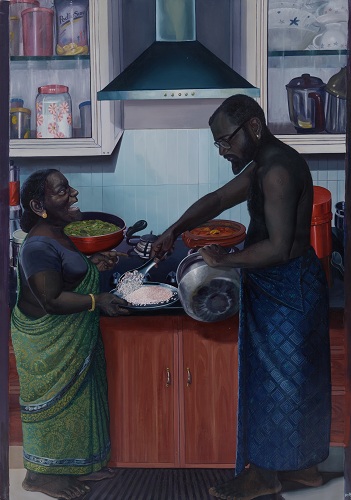
SP: The colour palette in your paintings is very peculiar. Would you like to share its significance with us?
RT: A dark-colour always comes into the paintings. It can be the atmosphere of our life background or the reflection of our society or because the places where we lived were generally dark, narrow rooms, with cramped surroundings. I’m not intentionally working on dark colours, but it naturally comes into my works as a reflection of my landscapes and lives around me.
SP: Any artist-influences you have for the style of your paintings?
RT: Many have influenced my works. Art is a natural process of understanding and correcting each other. As part of it there can be a lot of influence from other artists. Knowingly no particular person has influenced me.
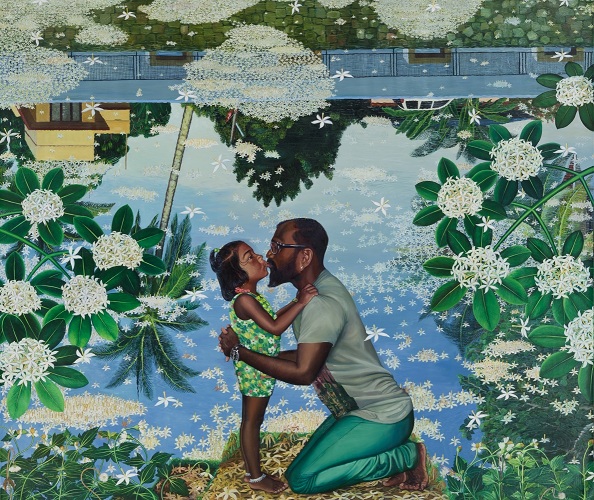
SP: In today’s time when to be politically correct is a peer pressure, there you are depicting life in its complete aesthetics. Will it be correct to say that your aesthetics is your politics? Please elaborate.
RT: Being real in life is a difficult thing. Ideologically we can make anything perfect. But being politically correct in life is not easy. Therefore, the art that is the output of life also has its reflections. Hence, highlighting its shortcomings is an important factor. Being politically correct is not easy in this country of India where even caste and communal divisions exist. It is not easy to express politics through art. The discomfort of seeing a black naked body in pictures raises a political question. Those who frown when they see such a picture will not react in the same way when they see a naked white body.
SP: Tell us something about your ongoing projects/ upcoming shows.
RT: I do not plan for an exhibition or a show when I am at work. I usually exhibit the works when they are done.
SP: Any suggestions you would like to give to the young emerging artists?
RT: Life is art. Art creation is a product of life. After all, what you are, how you live is most important above everything else.
Image Courtesy: Ratheesh T
Find more about the Artist and his artworks:
https://galeriems-viewingroom.exhibit-e.art/viewing-room/ratheesh-t#tab-1:slideshow;slide-1:3

